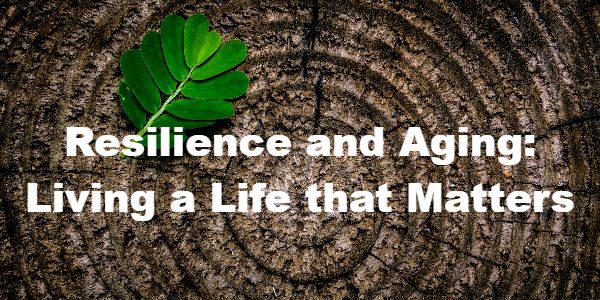This article is part of a 5-part weekly series on Resilience and Aging from our partner Dr. Gillian Leithman at Rewire to Retire.
Dr. Gillian Leithman offers her considerable expertise and knowledge on the challenging transition period between career and retirement. Her writing offers readers advice and insights into preparing to retire and living a fulfilling post-career life.
There has been a lot of discussion about resilience in the past few years in both the academic community and the popular press. The topic is particularly compelling to those of us interested in successful aging, because, unlike outdated views of aging and retirement that are synonymous with disease, decline and disability, it offers an alternate approach to studying later life development with a focus on growth, experience and vitality.
I don’t deny that aging has its challenges (as does every life stage), however, I think it’s time to level the playing field and explore the benefits and opportunities that lie ahead.
Science is discovering that the secret to health and longevity has more to do with our physical surroundings, personal attitudes, and significant relationships, than our biology.
Yet, our societal views of aging are so deeply rooted in negative stereotypes that one of the greatest challenges to our health and well-being are our own ideas of growing older.
I would like to challenge these very notions by drawing upon the latest social science research investigating resilience and aging.
Resilience is defined as the ability to positively adapt to stressful life events, trauma or difficulty, and grow from challenges. It requires that we develop strategies, skills, and resources to rebound when adversity strikes.
While the resilient ager knows how to cope with life’s daily hassles, stressors and inevitable challenges, she also lives a meaningful life, has close connections, is open to learning, invested in growth opportunities and curious about new experiences.
These skills can be developed and nurtured.
So, if you are prone to seeing the negative side of things or have a tendency of focusing on all that can possibly go wrong, continue reading. As I am going to share 5 tips in this series to help you develop your resilience muscles.
Let’s start with living a life of meaning and purpose which is the foundation of resilience.

Living a meaningful life, at any age or life-phase, involves the pursuit of meaningful goals. Goals that are personally motivating get us out of bed in the morning and lend structure to our lives, as the achievement of such pursuits requires meeting deadlines, fulfilling obligations, developing new skills and often socializing with others. This is particularly important for those nearing retirement or who are newly retired, as the absence of a routine and the loss of one’s purpose that is so often derived from one’s work in our North American culture, can lead to a downward spiral of depression and decline.
The pursuit of a personal project that you deem important and one that you feel passionately about, will lend structure and purpose to your life, and also has the added bonus of increasing your physical and mental well-being and your happiness!
Bear in mind that people differ in how they attribute meaning to their lives. While some derive meaning from work, others will attribute meaning to volunteering for a charity, or caring for friends and family members in need. What matters is that engage in pursuits that are meaningful to you.
The importance of being flexible
Some people mistakenly believe that the desire for achievement fades as one ages and retires. While such beliefs permeate much of our cultural thinking, research has revealed that such beliefs are inaccurate. While people’s goals change as they age, it is rare that the desire to live a life of significance ever really ends. What does however change, are the opportunities afforded to the resilient ager. Some opportunities expand, while others contract.
For example, an empty nester may suddenly have free time on her hands to pursue new hobbies and exotic travel excursions, whereas a hip replacement may impede an individual’s capacity to cycle long distances and may need to be substituted with an activity that is more suitable to the change in one’s physical abilities.
Resilience requires flexibility.
Goals that are personally meaningful lead to greater well-being and less psychological distress, as long as you know when to abandon unattainable pursuits, in favor of new ambitions.
So, what are you waiting for?!
Go find a goal that you are personally committed to, excited to engage in and look forward to achieving!
Up next in our resilience series is the Helper’s High. Check back next week!

